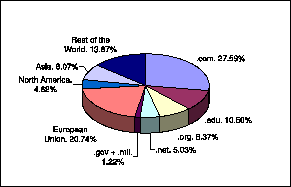
Figure 1: Distribution of XML sites by zone.
Copyright is held by the author/owner(s).
WWW2003 May 20--24, 2003, Budapest, Hungary.
ACM 1-58113-680-3/03/0005.
Although originally designed for large-scale electronic publishing, XML plays an increasingly important role in the exchange of data on the Web. In fact, it is expected that XML will become the lingua franca of the Web, eventually replacing HTML. Not surprisingly, there has been a great deal of interest on XML both in industry and in academia. Nevertheless, to date no comprehensive study on the XML Web (i.e., the subset of the Web made of XML documents only) nor on its contents has been made. This paper is the first attempt at describing the XML Web and the documents contained in it. Our results are drawn from a sample of a repository of the publicly available XML documents on the Web, consisting of about 200,000 documents. Our results show that, despite its short history, XML already permeates the Web, both in terms of generic domains and geographically. Also, our results about the contents of the XML Web provide valuable input for the design of algorithms, tools and systems that use XML in one form or another.
XML Web, XML Documents, Statistical Analysis, Structural Properties.
Experimentations, Management, Measurement
H.2.8 [Database Applications]: Data mining
H.5.4 [Hypertest/Hypermedia]
I.7.5 [Document capture]: Document analysis
The advent of the Web enabled the sharing of information at an unprecedented scale, either by content publishing or by data exchange. Unquestionably, the enormous success and popularity of the Web is due in great part to the introduction of HTML as the standard format for content representation. HTML also enables the exchange of data among Web agents (humans or computer applications) via forms. However, some of HTML's limitations are now apparent. For instance, HTML has a fixed set of markup, which poses limitations for content authoring. Also, although HTML forms are adequate for simple transactions, they do not scale up to complex data exchange transactions among several agents. In response to these limitations, the W3C introduced XML [31], which is a simple and flexible text format derived from SGML [24]. Unlike HTML, XML decouples content from presentation instructions. Thus, from a content authoring point of view, XML allows the same content to be presented in different ways by using different rendering instructions (e.g., XSL stylesheets [32]). From a data exchange perspective, XML allows the definition of domain-specific markup, which naturally serves as a format for representing and exchanging semistructured data on the Web [1]. In this paper, we focus on the subset of the Web that is formed by XML documents only, hereafter called the XML Web.
The reasons for studying the Web extend beyond intellectual curiosity. The Web is a technological phenomenon with several social and economic consequences, and therefore must be studied. There is interest from both academia and industry in understanding the macro properties of the Web (e.g., its shape, size and connectivity). Although such understanding of the Web as a whole exists (see [11] and references therein), to the best of our knowledge, no similar study has been presented for the XML Web. Moreover, because XML is in fact a meta-language, the XML Web is stratified into document classes, typically specified by conceptual schemas in the form of Document Type Definitions [31] (DTDs) or XML Schema [34] specifications. Characterizing these classes of documents potentially gives a much more accurate picture of the actual content available on the XML Web than is possible for the HTML Web.
XML has also received considerable attention from the database community, which typically views XML documents as (semistructured) data. There has been an astonishing amount of work in this community aiming at coping with XML data, primarily motivated by data exchange and integration [12]. For instance, there has been work on storing XML data, both by developing new technologies (e.g., [20]) and by leveraging mature ones (e.g., [5, 6]); indexing and querying XML content (e.g., [18, 17]); updating XML data (e.g., [22, 27]); and benchmarking XML applications (e.g., [35]). Furthermore, the database industry has also adopted XML aggressively: all major DBMS vendors already provide support for XML in one form or another, and ``native'' XML data management systems are already available (e.g., [13, 21, 26]). However, due to the lack of accurate characterizations of the XML documents on the Web, the development of such tools has been widely guided by folklore (e.g., XML documents are ``shallow''), by the few well known publicly available XML documents (e.g., [25, 36]), or by proprietary XML content. In any case, the number of algorithms, tools and systems being developed, a clear understanding of the document level or micro properties of the XML Web becomes paramount (e.g., what are the size and the complexity of typical documents?). Furthermore, accurate knowledge about the XML Web is especially necessary for the development of meaningful XML benchmarks, which arise naturally as more and more applications are developed.
In this paper we report the results of an analysis of about 200,000 XML documents publicly available on the Web, that come from a sample of the Xyleme [4, 37, 38] repository. We gathered and analyzed several meta-data about these documents, such as their size; number of elements and attributes; their URL; other documents they point to; whether they reference a schema; etc. Our results are divided into two categories. First, we study the XML Web at a macro level by showing how it is distributed across Internet domains and geographically, and by identifying the most common kinds of content in it. Next, we study the contents of the XML Web (i.e., its documents, irrespective of their origin). The results in this paper can be summarized as follows.
Our results show that, despite its infancy, XML already permeates the Web: XML documents can be found in all major Internet domains and in all geographic regions of the globe. The ``.com'' and ``.net'' domains combined contain 53% of the documents and 76% of the volume of XML content on the Web. Surprisingly, only 48% of the documents reference a DTD, and 0.09% of the documents make reference to an XML Schema specification. In terms of content analysis, WAP and RDF make up 26% and 17% of all documents on the XML Web, respectively. Finally, as with HTML documents, the out-degree of the XML documents seems to follow a power law.
Our results reveal that typical XML documents on the Web are small: the average document size in our sample is around 4KB. We also found that the volume of markup (i.e., element tags and attributes) is surprisingly high when compared to the actual content of the documents. Confirming the folklore, our results show that XML documents are in fact relatively shallow: 99% of them have less than 8 levels of element nesting. Also, 15% of the documents we analyzed have recursive content, in wich there is much regularity.
In this section we describe the sample of the XML Web used for obtaining the results we present in this paper. Our sample consists of 190,417 XML documents that combined represent approximately 843MB of XML content, and come from 19,254 different Web sites. These documents were randomly chosen from Xyleme's repository of publicly available XML documents, which is populated by a Web crawler. 26,989 documents (nearly 20% of the total) are exact replicas of other documents in the sample. This rate is lower than usual replica rates on the Web (e.g., [9] reports that 36% of the documents in a large crawl were exact replicas of other documents). Xyleme also has a private repository, which is populated by subscription only. At the time our sample was collected (February 2002), Xyleme's public and private repositories contained approximately 500,000 and 700,000 documents, respectively.
We note that our sample represents only a snapshot of the publicly available XML documents known to Xyleme, at the time its crawlers fetched these pages, and, unfortunately, there is not much we can say about its representativeness. Given the lack of reliable estimates of the size of the XML Web, and the intrinsic difficulty of obtaining such estimates [3], we do not claim that our study is definitive. Nevertheless, we give an accurate and valuable starting point for understanding the XML Web.
As mentioned earlier, we gathered several meta-data quanties characterizing the documents in our sample. These data were loaded into a relational database consisting of 12 relations, and, altogether correspond to roughly 2.5GB of data. All results presented in the paper are extracted from this database.
While describing the Xyleme's crawler is outside the scope of this paper, we give an overview of how it works. We refer the reader to [19, 38] for details.
The crawling starts with an initial set of pages (called seeds), from which URLs are extracted and stored in a link matrix. Eventually, the pages referred to by entries in the matrix are collected, and more URLs are extracted and added to the matrix. In order to be more effective, Xyleme's crawler fetches both HTML and XML pages. The HTML pages are parsed, the URLs they contain are extracted, but the pages themselves are discarded. The processing for XML pages is similar, except that the pages are stored in the system. From time to time (6 hours during the first experiments), the system reads the link matrix and decides which pages must be retrieved or refreshed. This decision is guided by the minimization of a cost function which prioritizes XML pages. Some parameters of this cost function are, for instance, the importance of the page [2], the estimated page frequency and the crawler bandwidth.
There are several organizations that periodically release statistics about the size and the shape of the Internet (e.g., [8, 14]). The data collected by these organizations comes primarily from accessing network addresses found in Domain Name Service (DNS) servers, and thus are very accurate. Those reports, however, count the number of computers that belong to a given Internet domain, regardless of how much (if any) Web content (XML or otherwise) is published by them. Our work, on the other hand, focuses on the XML Web only. Also, we give the distributions of the number of sites, number of documents, and volume of published content according to Internet domains.
The connectivity and structure of the Web as a whole has also been studied extensively (see [11] and references therein). Those results are primarily aimed at studying Web algorithmics; moreover, results of that nature have been shown to improve the accuracy of search engines [7]. Our work differs from those in the following ways. First, they do not distinguish the XML documents on the Web; therefore, it is not clear whether their results apply to the XML Web at all. Second, by focusing on the XML Web only, our results allow an accurate quantitative analysis of its properties. Third, we consider some aspects of the XML Web that are not relevant in the context of those works (e.g., the use of conceptual schemas). Finally, we characterize the XML Web both in terms of Internet domains and geographically.
Choi [10] has recently analyzed 60 DTDs found in the Web. Although we were able to find references to 75 different DTDs in our sample, our goals in this work differ from those of [10], in the sense that we are interested on the usage of DTDs (and XML Schema specifications) on the Web, rather than in the quality of these schemas. Furthermore, we present several quantitative results that cannot be derived from analyzing conceptual schemas alone, for obvious reasons.
The rest of the paper is organized as follows. We present the statistics about the XML Web in Section 2 and the results about the XML documents found on the Web in Section 3. Finally, we discuss our results and present directions for future work in Section 4.
The results in this section describe the XML Web and the kinds of documents that are found in it. These results are presented as follows. First, we show how the sites and the contents of the XML Web are distributed in terms of Internet domains and geographical regions. Next, we describe the actual content of the XML Web. Finally, we study the connectivity of these documents.
We cluster the 19,254 Web sites in our sample by zones, consisting of generic Internet domains (i.e., .com, .edu, .net, .org, .gov and .mil) and geographical regions, defined as follows. The Asia zone consists of China, India, Indonesia, Japan, Pakistan, Taiwan, South Korea and Singapore; the European Union zone consists of the fifteen countries in the European Union (as of 2002); the North America zone consists of Canada, the United States, and Mexico; finally the Rest of the World zone represents sites from all other countries. The distribution of sites according to these zones is given in Figure 1.
Two zones dominate the distribution of sites: the .com with 5,312 sites, and the European Union, with 3,993 sites. Following those, we have .edu with 2,022 sites, .org with 1,611 sites, Asia with 1,553 sites, .net with 968 sites and North America with 890 sites. The Rest of the World zone is mainly composed in the Russian Federation (314 sites), Switzerland (260), Czech Republic (251) and Norway (199).
In geographical terms, the distribution shows that North America has at least 16% of all sites (corresponding to the zones North America, .edu, .gov and .mil). We cannot distinguish the geographical origin of the other generic domains, and thus give a more accurate geographical distribution of the XML Web. However, we note that at least one country from each other continent is represented in our sample: Brazil (56 sites), Cuba (1), Iran (3), South Africa (83), and Niue Island, Polynesia, with 39 sites.

Figure 1: Distribution of XML sites by zone.
We now discuss how the contents of the XML Web are distributed according to the zones defined above. First, we consider the distribution of the documents (i.e., the number of documents per zone).
As already mentioned, there are 190,417 XML documents and 19,254 sites in our sample. This gives an average of 9.89 documents per site. The sites with the largest number of documents are: rpmfind.net, with 12,340 documents (6.5% of the total); download.sourceforge.net, with 7,948 documents (4%); and ludiwap.co.uk, with 7,029 documents (3.7%). The distribution of documents per zone is shown in Figure 2. One can notice that the first two top sites have an interesting impact on how the contents of the XML Web are distributed: a comparison between Figures 1 and 2 shows an increase in the participation of the .net zone, from 5% of sites to 20% of documents in the XML Web. Figure 2 also shows that the .com and European Union zones still dominate the distribution.
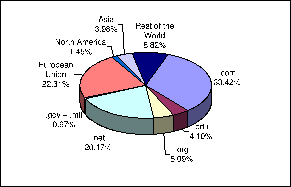
Figure 2: Distribution of XML documents by zone.
Figure 3 shows the distribution of the volume of XML content (i.e., the sum of the sizes of the documents) per zones. This graph shows the .com zone as the dominant zone, but it also shows another increase in the participation of the .net zone, now moving to second place with 35%. These two zones alone account for 53% of all documents and 76% of the volume of content on the XML Web.
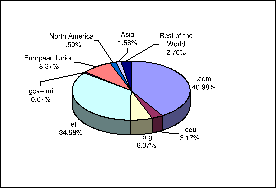
Figure 3: Distribution of volume of XML content by zone.
As mentioned earlier, one distinguishing feature of the XML Web is that it is stratified by classes of documents, defined by conceptual schemas. We now consider the use of the two standard schema languages defined for XML: DTDs and XML Schema. It turns out that 48% of the XML documents in our sample contain a link to a DTD. Surprisingly, only 75 different DTDs are referenced in our sample. These DTDs come mostly from the .com, .org, and .net zones, as shown in Figure 4. Also to our surprise, 92% of all DTD references are made to norms 1.1 or 1.2 of the WAP protocol [29].
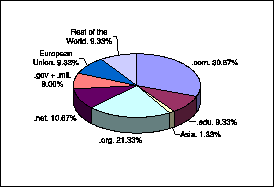
Figure 4: Distribution of DTDs by zone.
The use of XML Schema, the new mechanism to specify the schema for XML documents, is insignificant. Indeed, only 0.09% of the documents (179 documents) use either the attribute label ``SchemaLocation'' or ``noNameSpaceSchemaLocation''.
Another way of classifying the content of the XML Web is by looking at the extension of the associated files or the method by which they can be accessed. We distinguish the following major groups of content in this work: documents from the semantic Web (file extensions ``.rdf'' and ``.rss''); Wireless Application Protocol [29] (WAP) documents (file extension ``.wml''); XSL and XSLT documents; form-accessible documents, and indistinguishable ``.xml'' documents.
The distribution of the documents in our sample according to the groups described above is given by Figure 5(a). The graph shows that most documents belong to the ``.xml'', WAP, and form-accessible classes. Documents from the semantic Web community also make up a large fraction of the distribution. We also give the distribution of the volume of content according to these categories (Figure 5(b)).
Several observations can be made by comparing Figures 5(a) and 5(b). First, we note that although WAP documents account for an impressive number of documents, the combined volume of content in this class is not as significant. This can be explained by the fact that WAP documents are usually viewed in mobile devices, for which memory and communication capabilities are severely limited. Second, we note a considerable increase in the participation of the semantic Web class. Finally, we observe an almost insignificant volume of XML content obtained from accessing forms (i.e., the ``hidden XML Web''). Since we do not know the actual size of the hidden XML Web, we can only speculate that the Xyleme crawler is not designed to retrieve its documents. We note that even estimating the size of the hidden Web (XML or otherwise) is not a trivial task and usually requires special-purpose tools [23] and some human guidance [15].
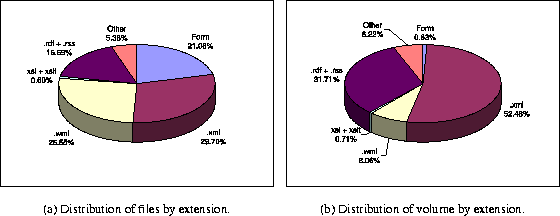
Figure 5: Distribution of XML documents and content volume by file extension.
We conclude the section with an analysis of the connectivity of the XML
Web graph. We define the out-degree of an XML document as the number
of attribute nodes labeled href, xmlhref, or
xlink:href in that document. Figure 6 is a log-log plot of the
out-degree distribution for the documents in our sample. Similarly to
previous observations on the HTML Web [16], we observe that the
out-degrees seem to follow a power law: the fraction of XML documents with
out-degree i seems to be proportional to ![]() for x = 1.8. This value
is derived from the slope of the line providing the best fit to the data. The
average out-degree of the documents in our sample is about 11.4, while the
out-degree for HTML pages is about 7.2 [16]. However, given the
(expected) small size of our sample compared to the (unknown to us) size of
the XML Web, we cannot generalize this result.
for x = 1.8. This value
is derived from the slope of the line providing the best fit to the data. The
average out-degree of the documents in our sample is about 11.4, while the
out-degree for HTML pages is about 7.2 [16]. However, given the
(expected) small size of our sample compared to the (unknown to us) size of
the XML Web, we cannot generalize this result.
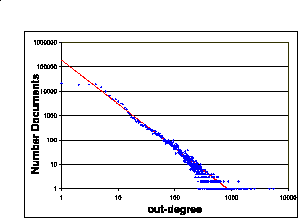
Figure 6: Distribution of documents by their out-degree. The distribution follows a power law of exponent 1.8.
This section discusses structural properties of the documents in our sample. First, we cluster the documents by size and compare the distribution of nodes according to this clustering. Next, we give an overview of the depth of the documents and the distribution of nodes per level. Then, we study the fan-out of the element nodes in terms of element and attribute nodes, for the first three levels. Finally, we characterize the recursive elements found in our sample.
The sizes of the XML documents vary from 10 to 500,608 bytes, for an average of 4,641 bytes. In Figure 7, we show how the documents are distributed according to their sizes, on a log-log scale. The vertical lines in the figure represent, from left to right, 512, 1024 and 4096 bytes. We use these values as boundaries for clustering the documents by size. These values are common candidates for disk page sizes in secondary-memory storage systems, and, thus, natural candidates for our clustering purposes. We name the clusters from C1 (documents smaller than 512 bytes) to C4 (documents larger than 4096 bytes). Figure 8 gives the distribution of documents per cluster.
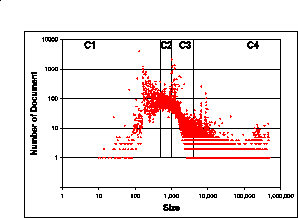
Figure 7: Distribution of document by size.
A closer look at the document clusters shows that their content is distributed as follows:
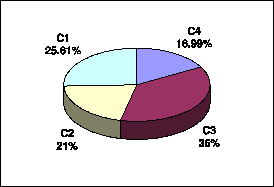
Figure 8: Document clusters by size.
The clustering above reveals that most ``.wml'' documents are relatively small (88% of them belong to either C1 or C2 ), while ``.rdf'' and ``.rss'' documents are usually larger than average (96% of all such documents belong to either C3 or C4 ). There is no such apparent classification for other kinds of documents.
This section compares the amount of markup, which we call structural content and consists of element and attribute nodes, versus the amount of textual content (i.e., PCDATA nodes), based on the clustering defined in the previous section. For these results, we do not keep track of ``empty'' text nodes (by empty, we mean text nodes with no characters except the different blank characters as defined in [31]). First, we compare the distribution of nodes of each type (Figure 9(a)). Several observations can be made from this figure:
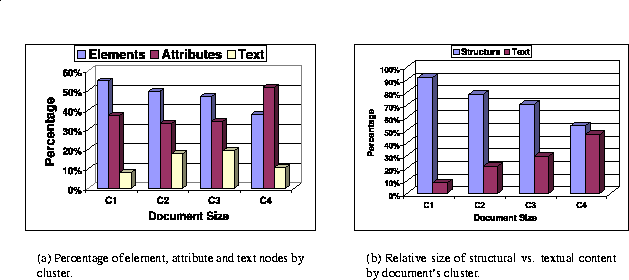
Figure 9: Comparison between structural vs. textual content.
We also compare the size (in bytes) of the structural content versus the size of the textual content, as shown in Figure 9(b). For the text size we count the number of characters contained in each non-empty text node. The size of the structural part of the document is simply the size of the serialized form of the document minus the total size of the textual information in the document. Note that the tags of empty text nodes are counted as structural information. As we can see, in all clusters, the structural information dominates the size of the documents.
These observations lead us to conclude that the structural information found in XML documents is in fact dominant over the textual content. This comes as no surprise for small documents, since XML (fortunately) requires explicit closing tags for all elements in the document. However, although our results show that the content/markup ratio increases with the size of the documents, the dominance of the markup over the content and, especially, the high number of attribute nodes indicate that the notions of data and meta-data are somewhat blurred in the XML Web.
Other interesting statistics we gathered concern mixed element content. It turns out that 782,602 elements (5% of the total) have mixed content. Surprisingly, these elements belong to 138,298 documents (72% of all documents).
We conclude this section by noting that our results about the usage of attributes and mixed element content invalidate the current folklore in the database community. The prevailing assumption in this community is that attributes and mixed element content are not as important as element content. Therefore, the focus of most of the work done so far misses the majority of the content found on the XML Web.
XML documents are often viewed as trees (see, e.g., [30]). Such a representation is often convenient when one wants to describe structural properties of documents. For instance, the level of a node in the XML tree is its distance from the root node of the document (the level of the root node is 0). Similarly, one defines depth of an XML document as the largest level among all the elements in the document.
The distribution of documents according to their depth is given in Figure 10. As one can see, most documents are relatively shallow: 99% of the documents have fewer than 8 levels. The average depth is 4, and the deepest document has 135 levels. There are 1,986 documents whose depth is zero: 1,671 documents which consist of a single empty element node, and 377 other documents that have a single element with some textual content.
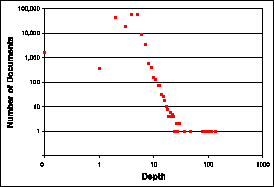
Figure 10: Distribution of documents by depth.
Figure 11 gives the distribution of the different node types per level in the XML tree. The figure shows, for instance, that, on average, the second level contains more attributes than any other level. In fact, 89% of all attributes are found in the first 3 levels of the documents. A similar pattern is also observed for element nodes and text nodes: 77% of all element nodes and 61% of all text nodes are found in the first 3 levels of the documents (see Figures 11(b) and 11(c), respectively).
The next two sections analyze these distributions further to study the fan-out of the element nodes in terms of attributes and child elements.

Figure 11: Distribution of nodes by level.
In this section we study the element fan-out (i.e., the number of children per element) of the element nodes. Our goal is to correlate the number of nodes for the first three levels in Figure 11(b) to study the structure of the subtrees rooted by these nodes. Intuitively, one can expect large element fan-out for ``collection'' documents containing several similar items. For instance, in a document like DBLP [36], one would expect a large fan-out for elements representing conferences. Small fan-out, on the other hand, intuitively indicates the document represents a single object (say, a single conference paper).
Figure 12(a) is a log-log plot of the element fan-out of the root element; i.e., the distribution of child nodes of the root elements. As already mentioned, 1,986 documents consist of a single root node with no children. Also, 53,401 documents have exactly 2 nodes (a root node with a single child). The distribution of the element fan-out seems to follow a power law (of degree 1.85). The same observation (with a degree of 3.1) can be made for the distribution of the element fan-out of element nodes at the second level, as shown in Figure 12(c).
The distribution for the element fan-out of element nodes at the first level (Figure 12(b)) is not as easy to characterize, however. Although one can notice that part of the distribution seems to follow a power law (of degree 2.8), there is also a considerable number of element nodes that have element fan-out of around 10,000. A closer look at this cluster reveals the following. These elements belong to 518 documents: 514 from the ibm.com/developerworks site and 4 from the w3.org/TR site. The label distribution for the children of the elements with large fan-out is as follows: in 135 documents, a single label is found; in 301 documents, two distinct labels are found; and in the remaining 82 documents, exactly three labels are found. Surprisingly enough, all 518 documents are character encoding maps for various different languages.
Another observation we make is that the average values for the element fan-out at levels zero, one and two are, respectively, 8.57, 5.76 and 0.18. This not only reinforces the previous observation that XML documents are shallow but also suggests that ``tall'' documents (i.e., documents with large depth) are not wide.
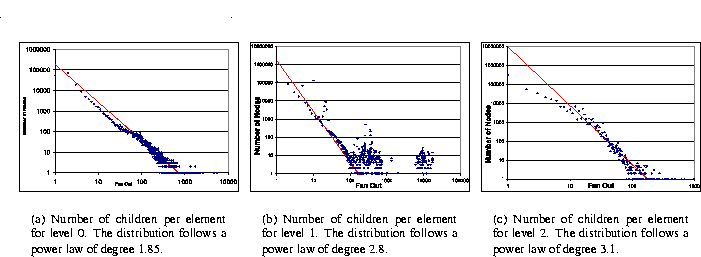
Figure 12: Element fan-out for the first three levels.
A similar analysis with respect to the number of attribute nodes per element (i.e., the attribute fan-out) for the first three levels of the documents is shown in Figures 13(a), 13(b), and 13(c), respectively. The shape of these distributions seem to follow power laws also with different slopes. We draw attention to the element's fan-out in terms of attribute nodes in the second level, which corresponds to the level where most attributes are found, as discussed earlier (see Figure 11(a)).
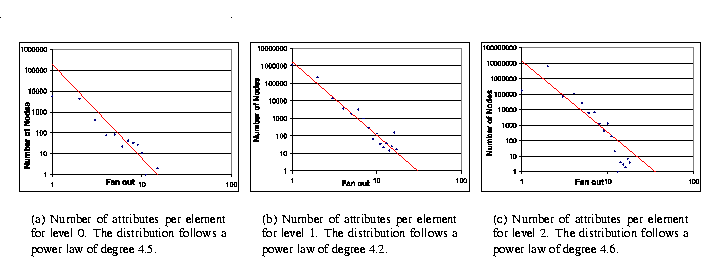
Figure 13: Attribute fan-out for the first three levels.
Other statistics are: 2,588,286 element nodes (18% of the total) have no attributes, and, thus, were not counted in this analysis. The average number of attributes per element for the first four levels are: 0.09, 1.06, 1.48, and 0.48. The attribute fan-out values greater than 1 explain the excess of attribute nodes mentioned earlier.
Our final study is an analysis of the 28,208 XML documents (14.81% of the total) that contain recursive elements. The reasons for studying recursion in the XML Web are simple. While recursion is naturally captured by XML documents and schema specifications, it can have a considerable impact on the performance of query processors and storage mechanisms for XML. This study is complementary to the work of [10], which characterizes recursive DTDs found on the Web.
For our purposes here, we say an element e is recursive if there exists at least one element d in the same document such that d is a descendant of e and d has the same label as e. For simplicity, we call an element-descendant association an ed pair. A recursive XML tree is an XML tree that is rooted at a recursive element and whose leaves are recursive descendants of the root (e.g., the tree in Figure 14(a)). For reasons that will become apparent shortly, we use two different interpretations of what to count as ed pairs. Consider the XML tree in Figure 14(a). For the All-Descendants interpretation (AD), shown in Figure 14(b), elements 3, 4 and 5 are the recursive descendants of element 1. In the Closest-Descendants interpretation (CD) in Figure 14(c), only elements 3 and 4 are considered to be recursive descendants of element 1. In both interpretations, element 5 is a recursive descendant of element 4.

Figure 14: The all-descendants and closest-descendants interpretations for recursive elements. The numbers at the left of the XML nodes in the tree are the node identifiers; the letters at the right are the node labels. The tables in Figures (b) and (c) show the pairing of elements (e column) and their recursive descendants (d column).
We now present some statistics about the ed pairs found in our sample. In total, there are 66,139 recursive XML trees (i.e., elements that contain at least one recursive descendant); there are 213,507 ed pairs in the AD interpretation, and 147,557 ed pairs in the CD interpretation. Among all recursive elements, only 260 different labels are found. In 27,577 of the documents with recursive content (98% of the total), a single label is used for all recursive elements, and in 307 documents (1% of the total), 2 labels are found among all recursive elements. The maximum number of labels used for recursive elements in a single document is 9. The most popular labels for the recursive elements in all documents are:
Among all documents with recursive content, 26,920 (95% of the total) do not reference a DTD. We also observe that the WAP protocol DTDs are the most popular among recursive documents as well: 876 documents (3%) reference the DTD for the WAP 1.2 protocol while 338 documents (1%) reference the DTD for the WAP 1.1 protocol. Cross-referencing the tag and document frequencies we find that most of the recursive documents come from the semantic Web community [28]: 25,226 documents (89%) with recursive content have either the ``.rdf'' or ``.rss'' suffixes. Finally 89% of these documents come from the .net zone with 36% from rpmfind.net and 22% from download.sourceforge.net. It appears that most of these documents describe the contents of &nbqsp; ``.rpm'' files, which are used to deploy software packages in the Linux community.
Our first study of the recursive XML content concerns the distance in the XML tree between elements and their recursive descendants. We measure distance by counting the number of edges separating the two nodes in the XML tree. For instance, the distance between elements 1 and 3 in Figure 14(a) is 2.
Figures 15(a) and 15(b) show the distribution of the ed pairs in each distribution according to the distance of the paired elements. The graphs have only one plot in common: the 115,622 ed pairs of elements whose distance is 1; a quick look at the AD plot shows that there are recursive XML trees of depth up to 119 levels, while the CD plot shows that there are recursive elements separated by a path of length 20 that does not contain other elements with the same label.
These results alone already justify the need for the AD and CD interpretations: the AD interpretation describes ``global'' properties of the recursive XML trees, while the CD interpretation describes ``local'' properties related to each recursive element and its descendants only. Evidently, some observations can be derived from either interpretation; for instance, both graphs above show that most elements in ed pairs have distance of 5 or less.
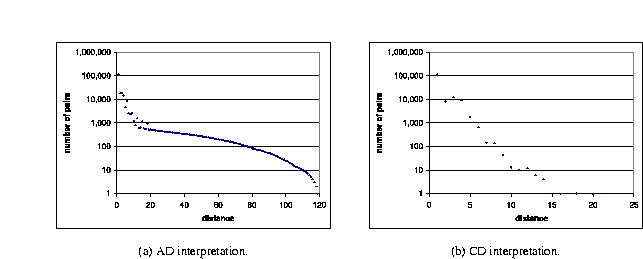
Figure 15: Distance between recursive elements and their descendants.
A natural question about the recursive XML trees is whether there is any regularity in their shape. A simple notion of regularity can be the average distance between the elements in all ed pairs in the document. For this study, the CD interpretation provides a better reading. To see why, consider again the recursive tree in Figure 14(a); its average distance using the CD interpretation is (1+1+2)/3=1,33. Now, consider the subtree obtained by deleting element 2 from the tree in the figure; the average distance of the new tree is (1+1)/2=1. Intuitively, we can say that the recursion in the second tree is more regular, because the distance between the elements in all ed pairs is constant and, thus, equals the average.
The notion of regularity we describe above has the advantage of being extremely simple to compute. However, it is easy to see that it can be misleading if different labels are present in the same recursive tree: consider an XML tree containing 3 ed pairs with elements labeled a, all with distance of 1, and 2 ed pairs with elements labeled b whose distances are 2. The regularity of this tree is (1+1+1+2+2)/5=1.4 despite the fact that the distance of the elements in ed pairs for each given label is constant. Therefore, a better notion of regularity would take different labels into account. However, since 98% of the documents with recursive content have a single label for all of their ed pairs, our simple notion of regularity can be used without incurring any significant error.
Our results for regularity using the simple metric described above are shown in Figure 16. We draw the reader's attention to two observations: (1) most documents have average distance of 1, which is nothing more than a re-statement of the results presented in Figure 15; (2) there is a lot of regularity in the recursion among the documents. The highest values in Figure 16(b), which uses the CD interpretation, are: 26,388 documents (93% of the total) with average distance 1; 1,141 documents (4%) with average distance 2; and 124 documents (0.44%) with average distance 3. This shows that more than 97% of all documents with recursive content exhibit high regularity. The equivalent plot using the AD (All Descendant) interpretation is given by Figure 16(a); we note that this figure permits a similar reading, as expected.
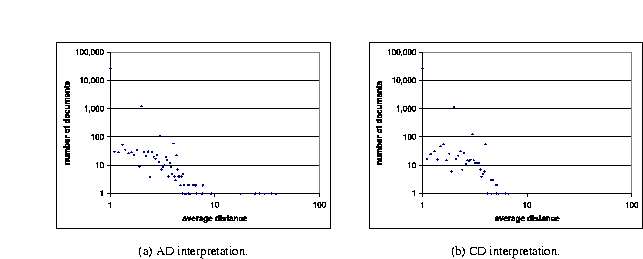
Figure 16: Distribution of documents by the average distance between elements in all ed pairs in the document.
Another important parameter in studying the recursion in XML documents is what we call the recursive fan-out of an element, which is the number of recursive descendants of that element (or, the number of ed pairs in which the element appears in the e column). Again, the AD and CD interpretations provide complementary readings. The AD interpretation measures the total number of recursive elements in a given recursive XML tree. This is precisely the semantics of an XPath [33] expression of the form //e//e, where e is the label of a recursive element. The recursive fan-out under the CD interpretation, on the other hand, can be viewed as a ``branching factor'' of the recursive XML trees: intuitively, it measures how wide the XML tree gets as a function of the distance of the root of the tree. We note that a recursive fan-out of 1 means that the recursive tree gets only taller, but not wider, as the distance from the root increases.
Figure 17(b) shows the distribution of the recursive elements w.r.t. their average recursive fan-out, using the CD interpretation, while Figure 17(a) shows the equivalent plot using the AD interpretation. As one can see, both distributions seem to follow power laws. We note that a similar notion of regularity applies here, and, again using the CD interpretation, we observe that the most common average fan-outs are 1, found in 36,498 elements (60% of the total); 3, found in 24,177 elements (37%); and 2, found in 2,951 (4%). Also, the average recursive fan-out of all elements is 2.23; the largest recursive fan-out is 752, found in one element.
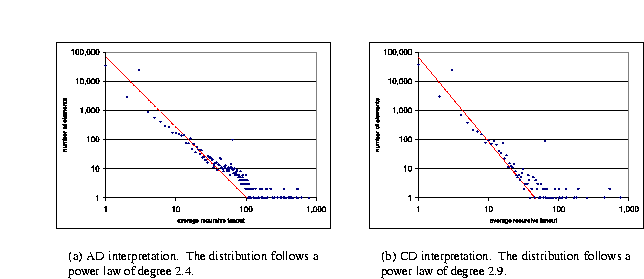
Figure 17: Recursive fan-out of the elements.
Several observations can be made from our results in this section. First, the fraction of documents containing recursive elements is not negligible (14.81%). Second, both the width and the height of recursive XML trees can grow relatively large, and vary considerably. The final, and perhaps, most important observation that we make is that there is a considerable amount of regularity in the recursion found in the XML documents of the Web.
In this paper we presented the results of a statistical analysis of a sample of the XML Web, consisting of about 200,000 XML documents. Our results can be classified into two broad categories: macro-level results, describing the XML Web and the kinds of contents in it, and document-level results, describing structural properties of typical XML documents on the Web. Our results can be summarized as follows.
We showed that, despite its short history, XML is already pervasive: XML content can be found in all major Internet domains and also in all continents of the globe. We also showed that 75% of all documents and 85% of the volume of XML content are provided by the .com, .net and by the different countries of the European Union. We gave the distribution of the contents of the XML Web based on several kinds of content, which revealed an impressive amount of content related to the semantic Web initiative. Next, we showed that the use of conceptual schemas on the XML Web is not yet widespread: only 48% of the documents reference DTDs while the number of documents that reference XML Schema specifications is insignificant (0.09% of all documents). These statistics can be viewed as empirical evidence for motivating the work on techniques for discovering semantic information from data (e.g., schema discovery, Web mining and clustering, data integration, etc.). We also showed that, as with HTML documents, the out-degree of the XML documents seems to follow a power law.
For the structural properties of the XML documents on the Web, we showed that their average size is around 4KB. We also found that the volume of markup is surprisingly high when compared to the actual content of the documents. On similar lines, we showed that the number of attributes exceeds the number of element nodes by a large margin and that most documents have elements with mixed content. This findings contradict the folklore in the database community. However, our results confirmed the folklore that XML documents on the Web are shallow: 99% of them have fewer than 8 levels. We also showed that such documents can be very wide: their element fan-out can be as high as 10,000. Finally, we showed that 15% of the documents on the XML Web have recursive content, although one can identify much regularity in it. Our results provide valuable insight for developing algorithms, tools and systems that use XML in one form or another. In particular, our results have direct application in the development of meaningful benchmarks for XML applications.
We would like to mention that the full version of the paper gives several other results, such as the distribution of words in PCDATA nodes; the distribution of element tag names and attribute names according to several criteria; and the use of namespaces in the XML Web. We also chose to present structural statistics for the whole data set even when some results are clearly biased toward some classes of documents (e.g., most of the documents with recursive content belong to the semantic Web); or by the number of replicas in the sample. We decided to present our results as we did in order to provide an overview of our sample. Providing such statistics for specific classes of documents will be done in a second step.
We identify several opportunities for extending this work. First, we plan to fetch new snapshots of the XML Web, in order to see how the it evolves over the time.
We also plan to investigate the percentage of semantic metadata that is effectively used by the XML documents on the Web. For instance, we want to check whether the documents that declare schemas do in fact conform with them, and how much of these schemas is effectively used. A more sophisticated analysis would involve testing the quality of the schemas based on how general they are. The adoption of XML Schema [34] motivates such qualitative studies notably to deal with several datatypes and the use of namespaces. Other interesting studies that fall in this category include determining the use of ID/IDREF(S) attributes or more general key/foreign-key constraints, for instance.
Another interesting study we identify is comparing the distribution of content of the Web as a whole to the contents of the XML Web, in terms of document and volume distribution by zones (as in Section 2). Such a study could help identify which communities on the Web are the ``driving forces'' behind XML as a technology.
We would like to thank Guy Ferran and Sophie Cluet for giving us access to the Xyleme repository. We would like to thank Mariano Consens, Sergio Greco, Alberto Mendelzon, Tova Milo, Ken Sevcik and Domenico Talia for their comments and suggestions on improving this paper. D. Barbosa and L. Mignet are supported in part by grants from the National Science and Engineering Research Council of Canada and Bell University Laboratories. D. Barbosa is supported in part by an IBM PhD Fellowship. P. Veltri is supported in part by a grant from ICAR-CNR.